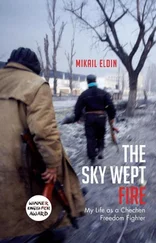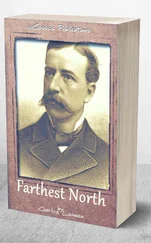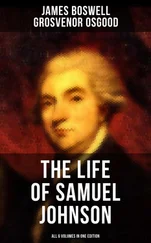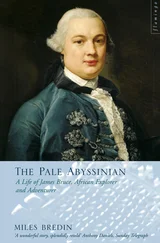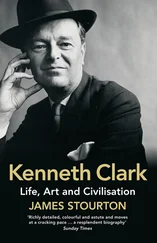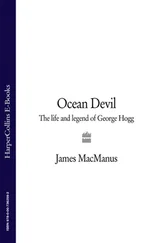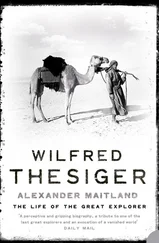1 ...7 8 9 11 12 13 ...25 “Awww, shit, Hurricane, I didn’t realize it was—” But before he could finish, four other squealing police cars arrived at the intersection. Someone else took charge and as Capter stepped away, Carter made eye contact with him and said, “Aw, fuck!” Other officers, their guns pulled, circled the Dodge. “Get out of that car,” barked one cop. “No, stay in the car,” another yelled. After a few more moments of confusion, an officer looked at Artis and pointed in the opposite direction on East Eighteenth Street. “Follow that car,” he yelled.
“What car?” Artis asked. But there was no time to talk. The sirens went off and the police cars began to peel away. Artis turned the car around and the cavalcade began racing up East Eighteenth. Artis had never been arrested and had never had any trouble with the police. Now he looked into his rearview mirror and saw a cop leaning out the window of the car behind them, pointing a shotgun at him. Artis felt his testicles tighten. “Damn, Rubin, damn! What’s going on?” he yelled.
Carter was also petrified. He had no idea where they were heading, only that they had turned East Eighteenth Street into the crazy backstretch of a stock car race. He saw landmarks fly by. There was a cousin’s home on the corner of East Eighteenth and Twelfth Avenue. There was the Nite Spot on the corner of East Eighteenth and Governor. But then the juggernaut sped beyond the black neighborhoods into unknown territory. Finally, the lead police car slowed down and made a sharp left turn at Lafayette Street, five blocks north of the Nite Spot. A crowd of people in the brightly lit intersection scattered as the pacer car screeched to a halt. The other vehicles followed suit.
Everything seemed to be in miniature. The streets were so narrow, the intersection so compressed, that any car whipping around a corner could easily crash into an apartment building or a warehouse. “What the fuck are we doing here?” Carter blurted. Neither he nor Artis had ever been inside the Lafayette bar; Carter had never even heard of the place. These are not my digs, but whatever went down, it had to be bad .
A scene of chaos lay before them. An ambulance had pulled up next to the bar, where a bloodstained body was being hauled out on a stretcher beneath the neon tavern sign. The throng of mostly white bystanders, many in pajamas, robes, or housecoats, milled about the Dodge, parked on Lafayette Street and hemmed in by police cars. There was panicked crying and breathless cursing, the slap of slamming car doors, and the errant static of police radios. Whirling police lights gave the neighborhood’s old brick buildings a garish red light as about twenty white cops, wearing stiff-brimmed caps, shields on their left breast, and bullet-lined belts, whispered urgently among one another.
The neighbors, some weeping, began to converge on the Dodge. Peering into the open windows, they looked at the two black men with anger and suspicion. Carter and Artis both sat frozen, unclear why they had been brought there but fearing for their lives. This is how a black man in the South must feel when a white mob is about to lynch him , Carter thought, and the law is going to turn its head . Finally, a grim police officer approached Artis.
“Get out of the car.”
“Do you want me to take the keys out?”
“Leave the keys.”
Then another officer intervened. “Bring the keys and open the trunk!”
“No problem,” Artis said.
As Artis headed to the rear of the car, Carter hesitated. If I get out of this car, it could be the worst mistake I’ve ever made . Artis opened the trunk, and a cop rummaged through Carter’s boxing gloves, shoes, headgear, and gym bag.
Another officer motioned to Carter to step out. Carter opened the door, but he had held his tongue long enough. “What the hell did you bring us here for, man?”
“Shut up,” the officer shouted as he cocked the pistol. “Just get up against the wall and shut up, and don’t move until I tell you to.”
As Carter and Artis walked toward the bar at the corner of Lafayette and East Eighteenth, a hush settled over the crowd. With bystanders forming a semicircle around the two men, Carter and Artis stood facing a yellow wall bathed in the glare from headlights. Artis turned his right shoulder and searched for a familiar face, maybe someone from racially mixed Central High School, his alma mater, but he saw only white strangers. The police frisked them brusquely but found nothing on them or in Carter’s car or trunk. Another ambulance arrived, and Artis felt the hair on his neck rise when he saw another body, draped in a white sheet, roll past him on a stretcher.
Finally, a paddy wagon pulled up and someone shouted, “Get in!” Carter and Artis stepped inside and were whisked away. Sitting by themselves, the two men were once again speeding through Paterson, heading to the police headquarters downtown. No one had asked them any questions or accused them of anything. They could see the driver through a screen divider but were otherwise isolated. “Something terrible is going on, but what’s it got to do with us?” Artis asked.
Carter, disgusted, told him to stay calm. “Don’t volunteer anything, but if someone asks you any questions, tell them the truth. The cops are just playing with me, as usual. It’ll all be cleared up soon.”
The paddy wagon stopped downtown, and the doors swung open at police headquarters. Built in 1902 after a devastating fire wiped out much of Paterson, the building is a hulking Victorian structure with dark oak desks and wide stairways. But Carter and Artis had barely gotten inside when there was another commotion. “Get back in!” someone shouted, and the two men returned to the wagon, which peeled off again. Now they headed on a beeline south on Main Street, eventually stopping at St. Joseph’s Hospital, Paterson’s oldest, where plainclothes detectives were waiting. Carter and Artis were hustled out of the truck and into the emergency room. Everything seemed white, the walls and curtains, the patients’ gowns and nurses’ uniforms, the floor tile and bedsheets. The room had that doomy hospital smell of ether and bedpans and disinfectant. The only patient was a balding white man lying on a gurney, a bloody bandage around his head, an intravenous tube rising from his arm, and a doctor working at his side.
“Can he talk?” asked one of the detectives, Sergeant Robert Callahan.
The doctor, annoyed at the intrusion, shot a disapproving glance at the detective, then at Carter and Artis. “He can talk, but only for a moment.” The doctor lifted the lacerated head of William Marins, shot in the Lafayette bar. The bullet had exited near his left eye, which was now an open, serrated cut. He was pallid and weak.
“Can you see clearly?” Callahan asked the one-eyed man. “Can you make out these two men’s faces?”
Marins nodded his head feebly. Callahan pointed to Artis. “Go over and stand next to the bed.” Artis walked over.
“Is this the man who shot you?” Callahan asked.
Marins paused, then slowly shook his head from side to side. Callahan then motioned for Carter to step forward. “What about him?”
Again, Marins shook his head.
“But, sir, are you sure these are not the men?” Callahan asked in a harder voice. “Look carefully now.”
Carter had been relieved when the injured man seemed to clear him and Artis. But now he concluded the police were going to do whatever they could to pin this shooting on them. Previous assault charges against Carter had been dismissed. Police surveillance had yielded little. Now, this: pell-mell excursions through the night, an angry mob outside a strange bar, a one-eyed man lying in agony, and Carter an inexplicable suspect. He had had enough. As Marins continued to shake his head, Carter closed his eyes, clenched his fists, and spilled his boiling rage. “Dirty sonofabitch!” he yelled. “Dirty motherfucker!”
Читать дальше

